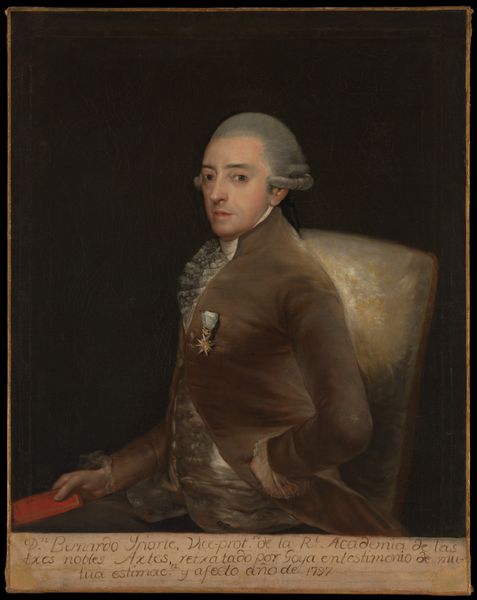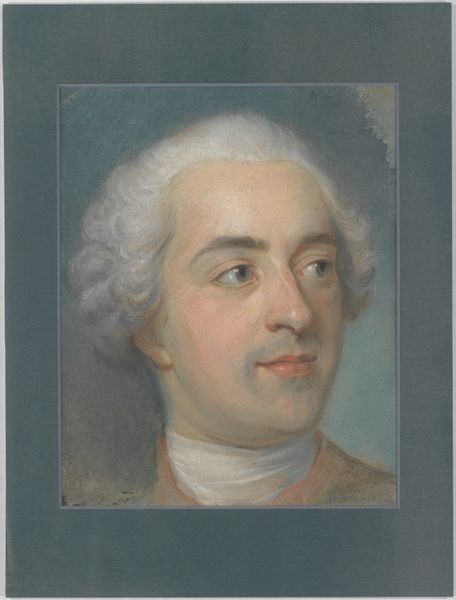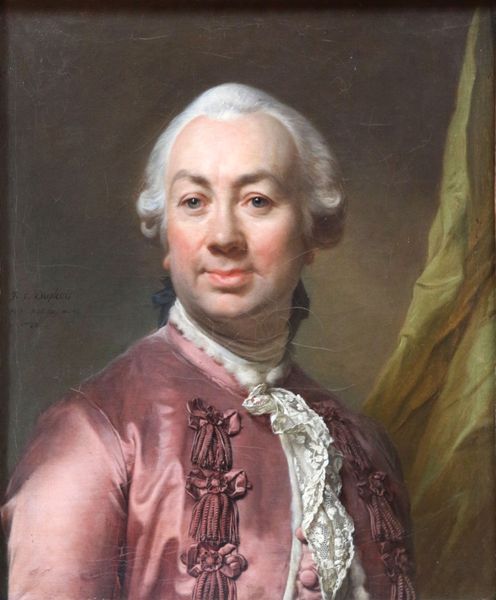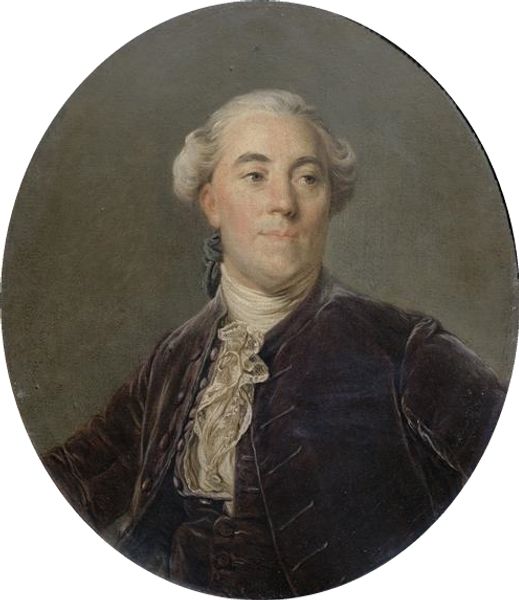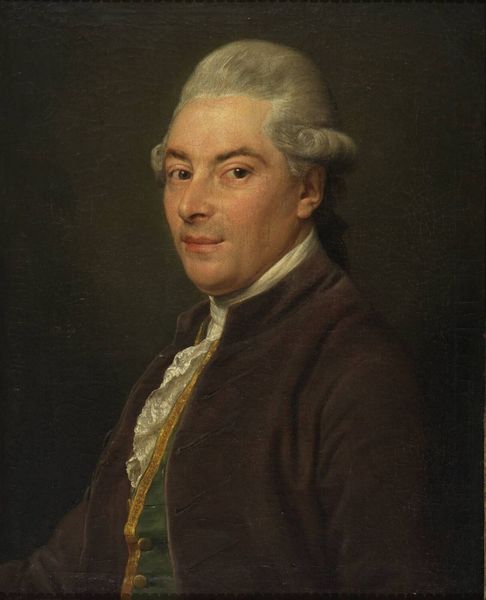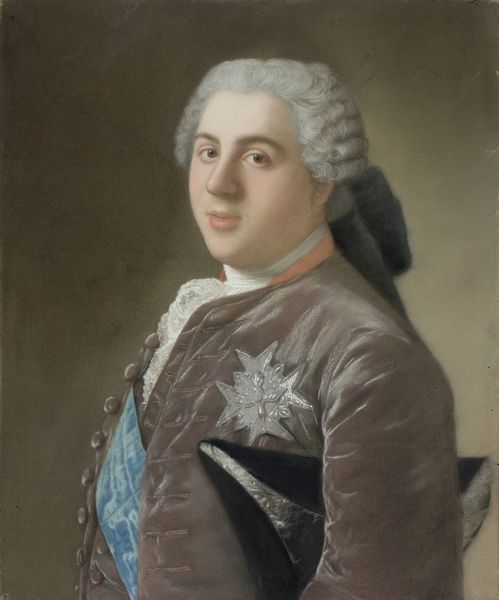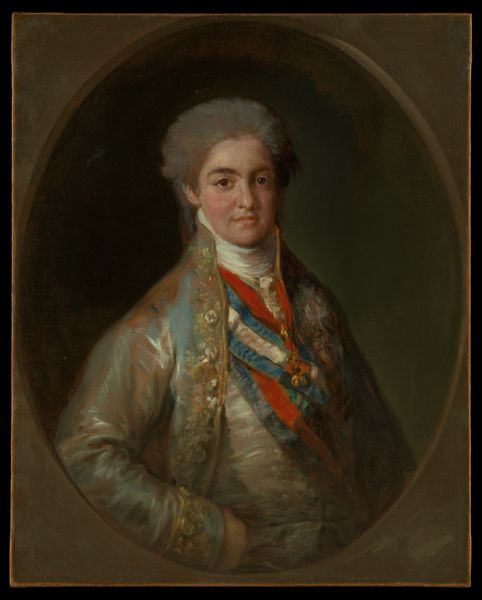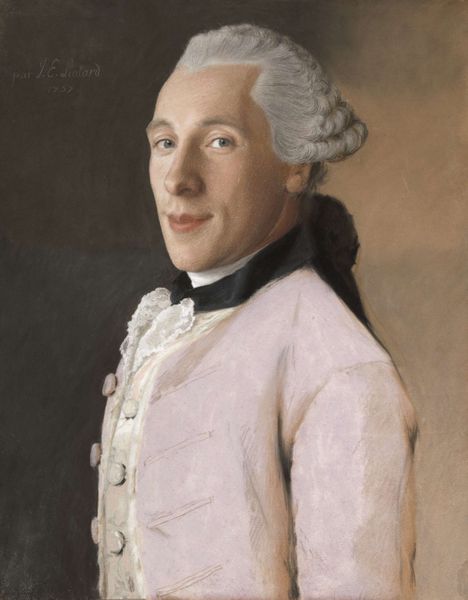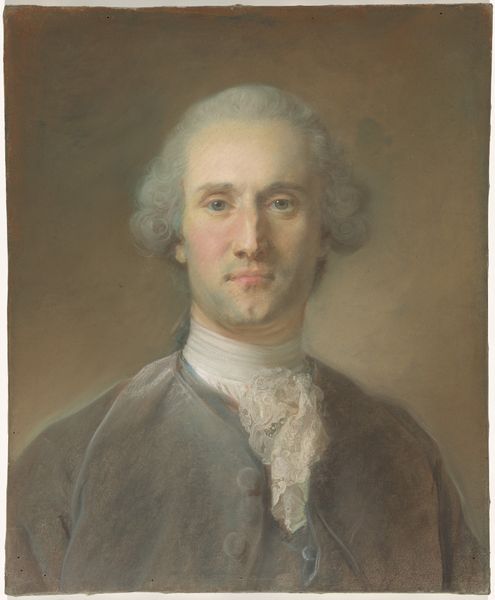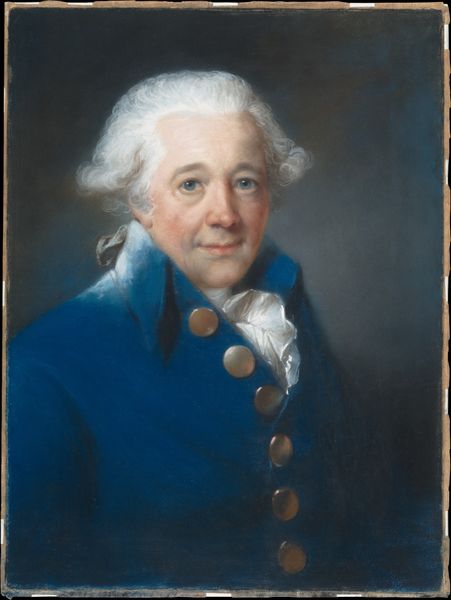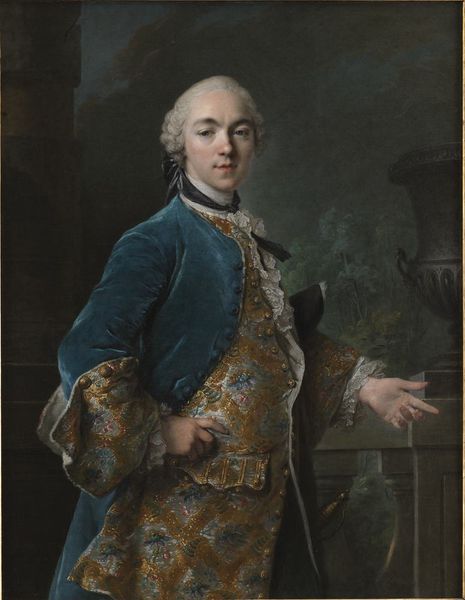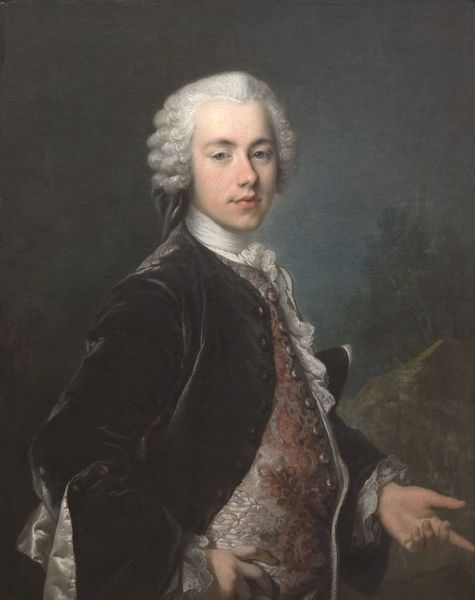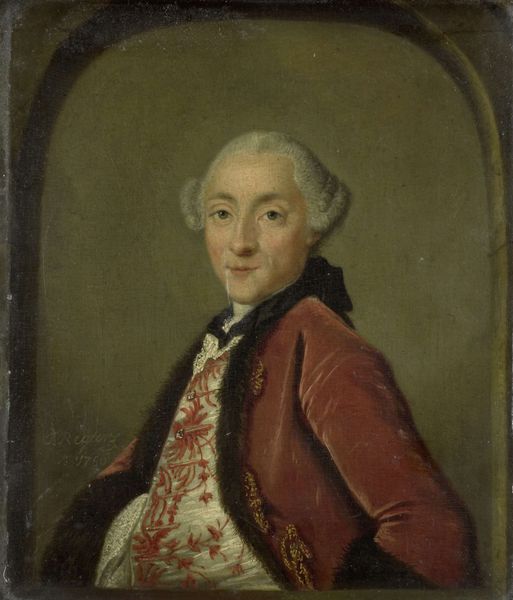
painting, oil-paint
#
portrait
#
baroque
#
painting
#
oil-paint
#
figuration
#
genre-painting
#
rococo
Dimensions: 22 7/8 x 18 1/2 in. (58.1 x 47 cm)
Copyright: Public Domain
Editor: So, this is Jean-Baptiste Perronneau's *Olivier Journu*, painted in 1756. It's currently hanging in the Metropolitan Museum of Art. It's oil paint. I find the pastel hues strangely calming, even with the formality of the pose. What do you see in this portrait? Curator: I'm immediately drawn to the symbols Perronneau uses to portray Journu. Notice the gaze – direct, but not challenging. What emotions do those eyes convey? To me, there’s a confidence, certainly, but also an openness, an invitation almost. Editor: Yes, he does seem quite approachable for a formal portrait. The flowers seem significant, too. Curator: Precisely. The arrangement, strategically placed near the heart, hints at Journu's sensibilities. Roses, in that era, could speak of love, beauty, and fleeting nature, but also secrecy depending on the context. It is also interesting to compare with portraits from the same era such as Vigée Le Brun’s self portraits. Editor: Fleeting nature? That’s interesting, given portraiture is about preserving someone’s likeness. Curator: An intriguing tension, isn’t it? Art often holds contradictions like this, doesn't it? And the ribbon or badge… faint, barely visible. I suspect it points to an affiliation, perhaps a society or order Journu belonged to. Cultural memory relies on visual cues. Editor: I hadn't even noticed the ribbon. Thinking about those little cues makes you look so much deeper into a piece. Curator: Indeed. Every element, deliberately placed, contributes to the narrative. Looking at paintings can allow the viewer to unlock the cultural memories. I had not thought about how his approachable nature could point to new rising bourgeoisie’s in the mid 18th century.
Comments
No comments
Be the first to comment and join the conversation on the ultimate creative platform.
